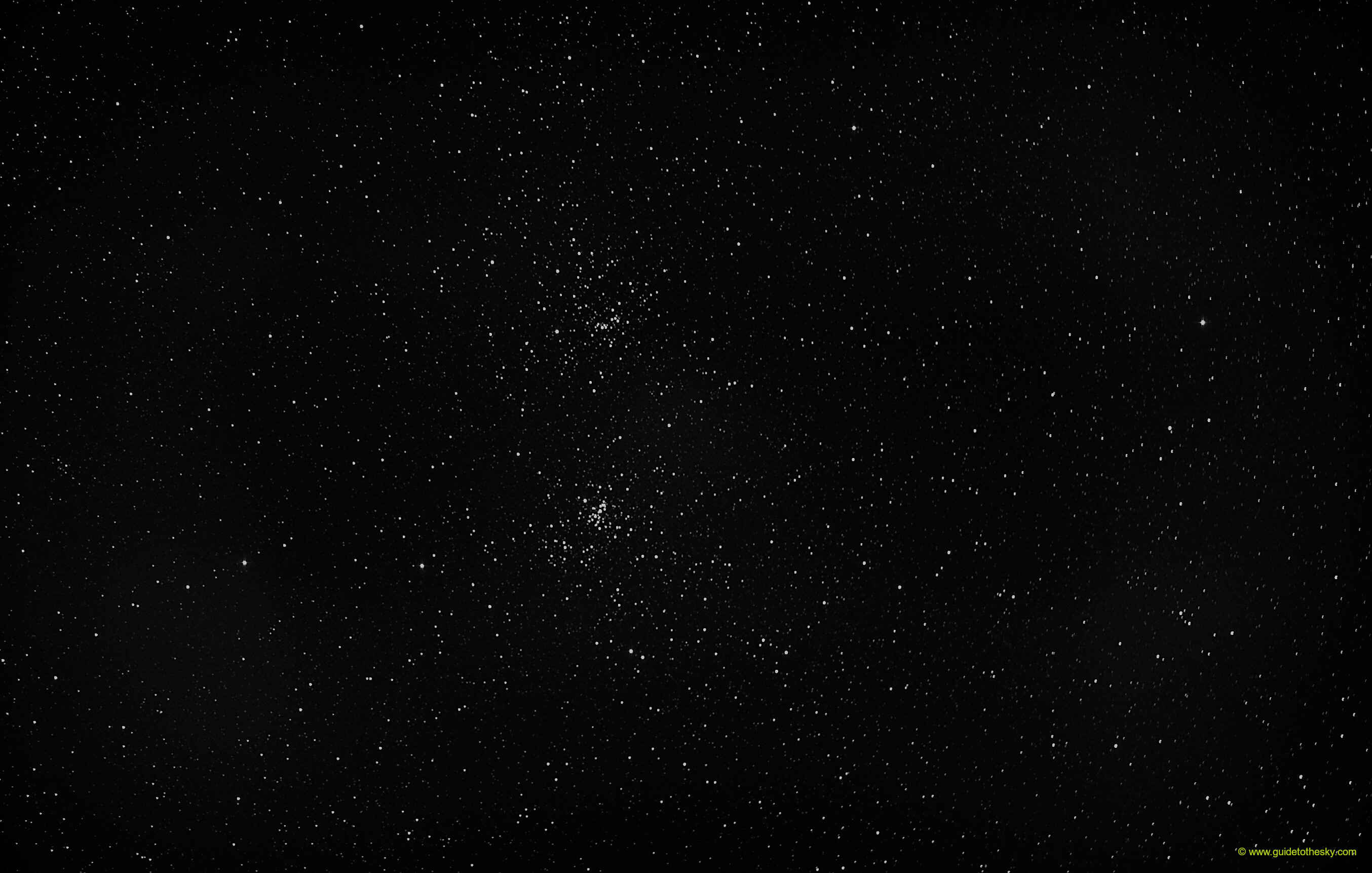NGC 884 - Perseus
Según las últimas mediciones estiman que NGC 884 dista {{ object[0].NGC884.mesDistances[0].dist }} {{ object[0].NGC884.mesDistances[0].unit }} de nosotros.
¿Están los dos unidos gravitacionalmente? Todo parece indicar que así es. Las mediciones indican que NGC884 estaría algo más alejado de nosotros que su compañero. Tal diferencia podría ser mayor de 300 años luz!
La observación o la fotografía de ambos cúmulos es espectacular, las estrellas se acumulan en el centro de ambos cúmulos, tanto que, incluso en fotografías es dificil contar su número.
El cúmulo doble de Perseo también está en una zona rica en estrellas pues se ubica en el recorrido de La Vía Láctea.
NGC884 - Cúmulo doble de Perseo - E - en la IA
NGC 884, also known as Chi Persei (χ Persei) or h Persei, is a prominent open star cluster located in the constellation Perseus. It's a beautiful and easily observable object, particularly when viewed with binoculars or a small telescope. Here's a breakdown of its key features and why it's interesting:
Key Features:
- Open Cluster: NGC 884 is an open cluster, meaning it's a group of stars that were formed from the same molecular cloud and are gravitationally bound, but less tightly than globular clusters.
- Part of the Double Cluster: NGC 884, along with its nearby cluster NGC 869 (h Persei), forms a spectacular double cluster visible to the naked eye under good dark sky conditions. The pair is collectively known as the Double Cluster in Perseus or h and χ Persei (h and Chi Persei).
- Young Age: NGC 884 is a relatively young cluster, estimated to be only about 12.8 million years old. This youth contributes to the presence of many bright, hot blue stars.
- Distance: It's located about 7,600 light-years away from Earth.
- Composition: The cluster contains a diverse population of stars, including many hot, blue giants, as well as some cooler, redder stars.
- Bright Stars: The cluster is notable for its abundance of bright, massive stars.
Why it's Interesting:
- Visual Appeal: The Double Cluster, and NGC 884 in particular, is a visually stunning object, especially when viewed through binoculars or a telescope. The contrasting colors of the stars and the sheer number of stars packed into a small area make it a favorite target for amateur astronomers.
- Stellar Evolution Studies: As a relatively young cluster, NGC 884 offers a valuable opportunity for astronomers to study stellar evolution. By observing the properties of the stars in the cluster, they can test and refine models of how stars are born, live, and die.
- Distance Measurement: The accurate measurement of the distance to NGC 884 and other clusters is important for calibrating the cosmic distance ladder, which is used to determine the distances to more distant objects in the universe.
How to Observe:
- Naked Eye: Under dark skies, the Double Cluster can be seen as a hazy patch of light in the constellation Perseus.
- Binoculars: Binoculars reveal the individual stars within the cluster and provide a much more detailed view.
- Telescope: A telescope allows you to see even more stars and appreciate the full beauty of the cluster. Even a small telescope will provide an excellent view.
In Summary:
NGC 884 (Chi Persei) is a bright and beautiful open star cluster that is part of the famous Double Cluster in Perseus. Its young age and diverse stellar population make it a valuable object for scientific study, while its visual appeal makes it a favorite target for amateur astronomers.
Más información sobre NGC 884 en NASA/IPAC.
Mapa alrededor de NGC 884
Otros identificadores de NGC884:
"C 0218+568" ,"NGC 884" ,"OCISM 86" ,"OCl 353.0" ,"OCl 353" ,"Raab 10" ,"[KPR2004b] 30" ,"Cl Collinder 25" ,"Cl Melotte 14" ,"NAME chi Per Cluster" ,"NAME chi Persei Cluster","NAME khi Per Cluster" ,"[KPS2012] MWSC 0184" ,


